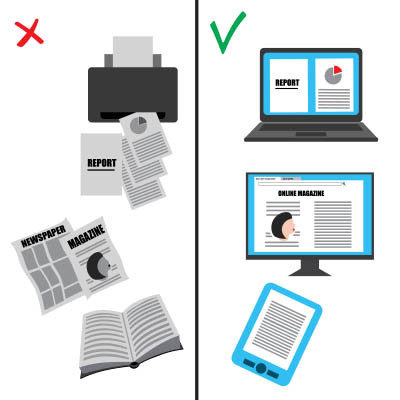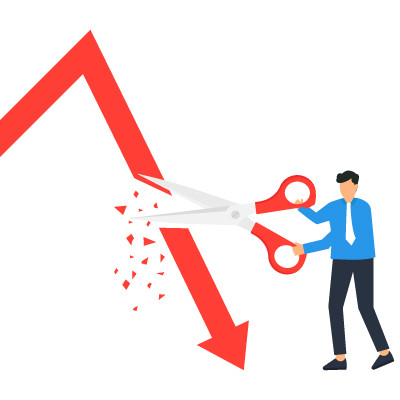Time isn't just money; it's the entire vault. The right tools and strategies can transform not just your IT infrastructure, but your entire workflow. Today, we're going to talk about a surprisingly simple, yet profoundly effective, time management method: the Pomodoro Technique. Let’s take a look at this useful strategy that can keep you focused and on task.
Argentum IT LLC Blog
Productivity is one of the most common business goals today, with many doing everything they can to optimize it. In fact, today is officially World Productivity Day, highlighting the significant importance placed on this specific metric.
Despite this, productivity can often feel unattainable… regardless of how busy one is throughout the day. Let’s fix that and consider three habits that will greatly support your work and help make the most of your time.
Many—we’d go so far as to say most, at some times—businesses have a pretty concrete view of the role that their IT plays in operations: cost center, money pit, necessary evil.
Something we’ve realized, however, is that these impressions are simply warning signs that a business’ technology strategy and approach need some attention. Let’s identify three signs that might be all too familiar to you, and address what can be done to change course and help turn your IT into a contributing part of your overall productivity.
As the water cooler whispers about artificial intelligence get louder, workers are actively becoming worried about the status of their jobs. The idea of robots taking jobs can sound alarming, but knowledge is power. By understanding how AI works and what it can do for a business, employers and employees alike can gain some perspective and peace of mind.
In nearly every office, the printer hums along, a familiar backdrop to the workday. Have you ever paused to consider how much all that printing really adds up? If the average office worker might use around 10,000 sheets of paper annually, as some studies suggest, that is far too high with the technology that’s available to us today. That’s a significant impact on budgets and the environment.
You see it everywhere, again and again: how much return an investment into proper business technology will bring, with little to no context behind these claims. We want to fix that.
Let’s examine why so much information about modern IT options can be less than helpful, and see if we can’t clarify what it means. Simplifying tech for the businesses we work with is one of our primary goals, after all.
Growing your business means making smart choices, and that definitely includes getting the right technology. Finding the right tech can often feel like a balancing act: you need powerful tools to compete and grow, but you also need to be mindful of your budget.
At Argentum IT, serving businesses right here in Kentucky and Southern Indiana, we help you find that sweet spot where your tech investments truly support your goals without unnecessary costs.
Over time, you might add new technology solutions to your infrastructure to solve specific problems. Before you know it, you might have an overwhelming amount of technology that keeps your business operational. This issue—tech sprawl—can hold your business back from efficient operations, but don’t worry… we have a solution for you.
If you want your business to succeed, you need to take care of your employees, but businesses sometimes let this important task slip in the throes of the day-to-day. Deloitte estimates that around 8 out of every 10 wage workers show signs of burnout. So the question then becomes… What are you doing about it?
Everyone relies heavily on software. From operating systems, to Internet browsers, to applications, software runs the world. For a long time, many software titles were seen as too expensive as you had to purchase the software license (usually a year), the hardware to run it from, and additional hardware to disseminate it. Nowadays, there is a better option: Software-as-a-Service.
It’s natural for businesses to rely on their tools, like IT, to achieve success, but if you don’t take care of your systems, it could lead to downtime. You can bypass many of these challenges with the right approach to technology maintenance. We want to highlight some of the proactive methods you can use to keep downtime to a minimum.
Being a green business is certainly not a bad thing. Not only does it help boost your company's environmental friendliness, but it can often attract customers and clients who prioritize the environment. Less mentioned, however, is how being greener can actually give your business an advantage in the right circumstances.
Projects are a big part of the small business model. Whether they are projects to improve organizational efficiency or productivity or projects that are completed for customers, strong project management is extremely important. Scope creep happens when a project becomes less efficient because the demands of the project keep changing. In today’s blog, we will try to define scope creep and how to prevent it from being a problem for your business.
Every business relies on technology for at least part of its operations. This means that every business—particularly those with operations that make IT an essential part of the process—will need access to some form of IT support.
For most small and medium-sized businesses today, managed IT is the best option. Let’s discuss a few reasons why this is.
“Quit.” The q-word is (at least, in the business setting) one of the worst four-letter words someone can use… usually. In the context you probably first thought of, yes, but there are plenty of times that quitting can directly benefit your operations.
For instance, let’s say you have a project that is eating all of your resources, with no real returns in sight. What do you do then?
Technology is an essential part of most business operations nowadays, regardless of the size of the business… and how that size may change over time. As such, it is essential that the infrastructure that supports this IT can adapt to these swells and declines.
Let’s discuss why it is so important that your IT infrastructure fits your business and a few best practices for tailoring it.
Generating and capitalizing on digital leads is crucial for business success. A well-thought-out strategy to attract leads through websites, emails, and social media can significantly enhance a company's ability to create a good customer experience and grow its business. This month, we’ll examine this element of a business and give you a step-by-step guide to getting the most out of your digital marketing efforts.




















